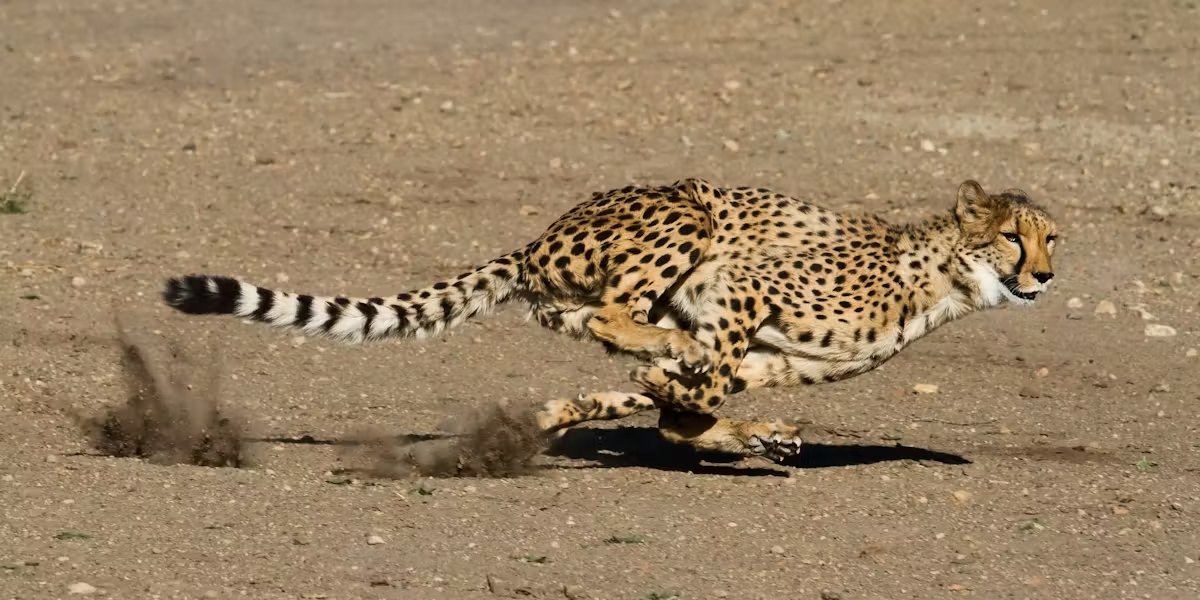The cheetah (Acinonyx jubatus) is the fastest land animal on earth reaching speeds of over 60 miles per hour (29 m/s). The cheetah is native to Africa and parts of the Middle East and is a predator of the impala, along with several other prey animals of the Savannah and Middle East. The biomechanics of the cheetah can help us understand how to create such high speeds in biological organisms and how to protect the body against high acceleration and decelerations.
Read more: The Biomechanical Blueprint: How Cheetahs’ Bodies Are Engineered for SpeedIn a study from 2012, researchers measured the speed and force of captive cheetahs in sprint and compared them to greyhounds, who have similar body structures to cheetahs. The experiment was set up similar to how greyhounds race with the cheetah’s chasing a “rabbit“. What Hudson et al. found was that cheetahs in full sprint put 70% of their body weight into their hind legs as compared with only 62% for the greyhound. This is coupled with the fact that the cheetah had a longer stride length and a higher frequency of strides, both of which led to a faster ground speed.

Another study accounted for the fact that cheetahs in captivity do not run at their maximum speed. This is presumed to be because cheetahs in captivity have no reason to subject their bodies to these accelerations and decelerations. This study instead put an accelerometer and Global Positioning System (GPS) inside a collar and put them around the neck of three females, and two male cheetahs. An accelerometer is able to track its orientation and using different equations, is able to track the acceleration in all different directions. Using the data collected by these collars, the researchers found that the cheetahs were able to accelerate by up to 3 meters per second and decelerated by up to 4 meters per second in a singular stride length. What these researchers also found was that in comparison to other greyhounds specifically, cheetahs had a longer and stronger propulsive muscle group, like their hamstrings. Even though the stride frequency was similar between the cheetah and greyhound, the cheetah’s muscles were able to shorten at a greater speed, creating more force. This is because force is equal to mass multiplied by acceleration (F=ma) and because the acceleration of the shortening of the muscles is greater, it generates a greater force. In addition, another study found that in comparison to impalas, the cheetah’s main prey, the cheetah had a 20% increase in the power output in their high-performance muscles. Wilson Et Al. also found that in order to fully control their acceleration and deceleration, cheetahs have non-retractable claws in order to fully grip the ground more effectively. Lastly, it was found that the cheetah, uses an extremely low center of mass in order to make high velocity turn. Using this technique plus the grip with their claws, cheetahs are able to manuever at high speeds.

In conclusion, the cheetah uses a majority of hind muscle groups to propel itself forward at a high stride frequency. This is coupled with small inertial adjustments as well as traction from the claws to achieve extreme speeds of over 60 miles per hour. In order to truely find the maximum speed of the cheetah, more work needs to be done to study this remarkable animal.
Featured Image from Conservation Africa
